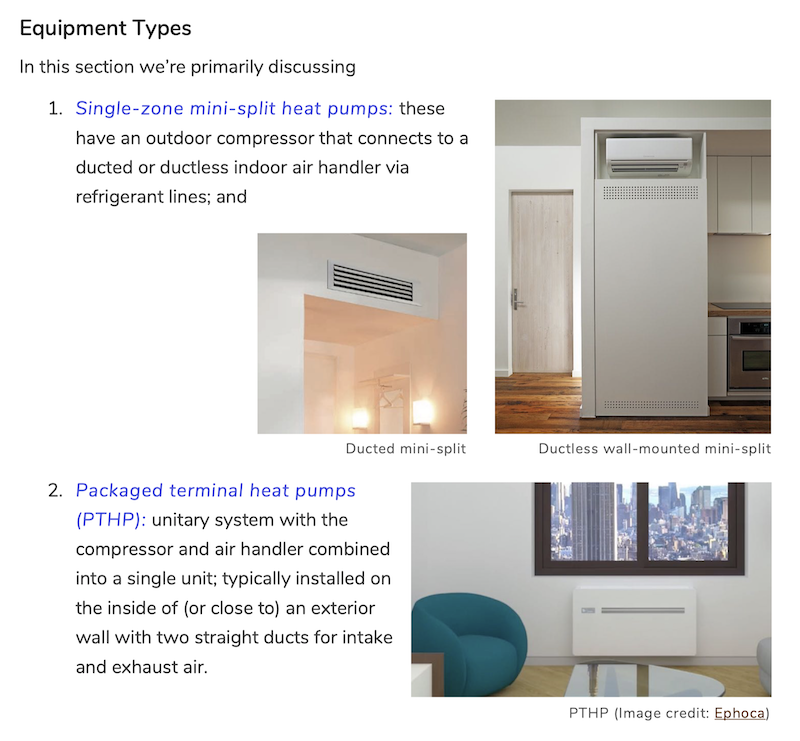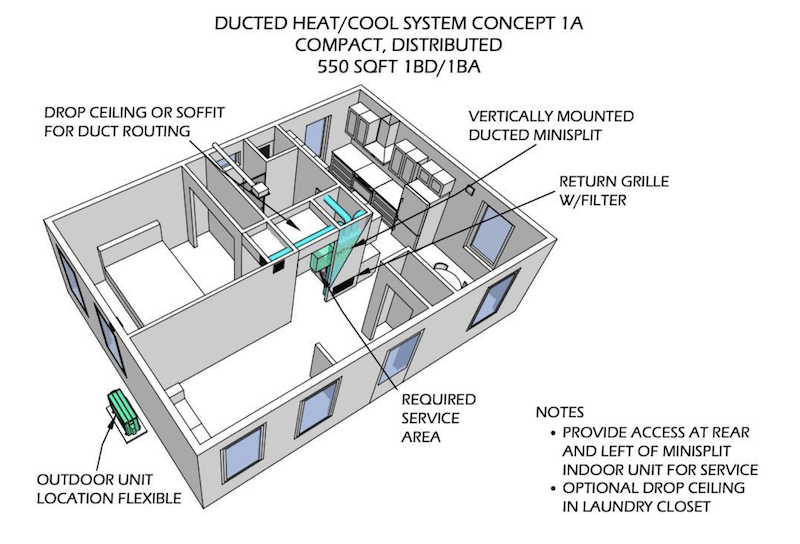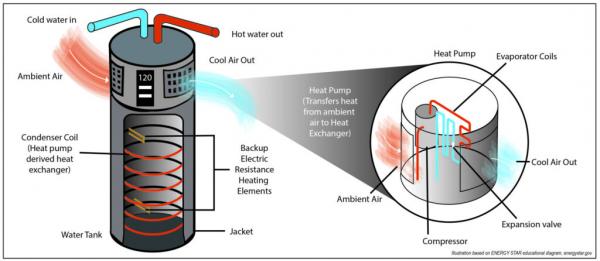Did you know that water heating is often the top energy end use in smaller ADUs or homes with a higher occupant density? Specifying heat pump water heaters (HPWHs) is one of the best strategies to reduce energy use as these are about three times more efficient than electric resistance or gas.
One of the challenges with HPWHs is their installation requirements. Generally, the minimum footprint is about 2.5’ x 2.5’ plus at least a foot at the front for service/control access. They require a large volume of air circulation to avoid over-cooling the space and so need a louvered door or ducting. Some HPWHs are noisy; in milder climates like the Bay Area they can be moved outdoors and housed in an exterior closet to isolate them from the living spaces while being protected from the elements. In colder climates, they must be placed indoors since most models stop operating in heat pump mode once temperatures fall below about 40°F and they must be protected from freezing anyway. Garages or basements are often good locations.
In California, the Title 24 energy code theoretically allows tankless electric water heaters for ADUs up to 500 sq.ft.—a code exception essentially means that water heating energy use is exempt from the performance energy model calculations. But the building must still be compliant without the water heating item, and in small ADUs it's common to exceed both the heating and cooling energy budgets in a performance model. Even if your design can achieve Title 24 compliance with a tankless unit we discourage them in most scenarios. You can learn more about water heating recommendations and equipment options for ADUs in the ADU E-Guide.
HVAC
On the heating and cooling side, we are generally looking at the lowest capacity heat pump systems whether they are packaged or mini-splits. There are a variety of options for indoor mini-split heads that are either point source (wall hung or ceiling cassette) or distributed (ducted); these examples are outlined in the ADU E-Guide:

The point source system is excellent for a studio layout and, depending on the layout, can work great for a 1BR particularly if the bedroom door is typically left opened. Otherwise a small supplemental electric resistance heater in the bedroom can reduce any concerns over heating distribution. While electric resistance is not ideal from an efficiency standpoint, it can be right-sized to meet low loads and has the benefit of being separately zoned. In our experience, one zone of electric resistance doesn't usually pose a Title 24 compliance challenge in ADUs that use heat pump water heating.
You can learn more about HVAC recommendations and equipment options for ADUs in the ADU E-Guide. In the guide, we provide over ten 3D conceptual diagrams showing variations on layout for HPWHs, heating and cooling, and ventilation systems. Here's one of the diagrams:

Building Envelope
Switching to envelope topics, for small footprint ADUs typically built on a concrete slab you may be surprised to learn that the foundation is a big source of heat loss. Heat losses through uninsulated slab edges in smaller ADUs will typically account for at least 30% of the home's heating energy! Insulating the slab edge can significantly reduce this energy use, and it becomes all the more important the colder the climate gets.
These are just a few highlights from the guide. For a full list of detailed topics, explore the Table of Contents in the teaser linked from here.






























